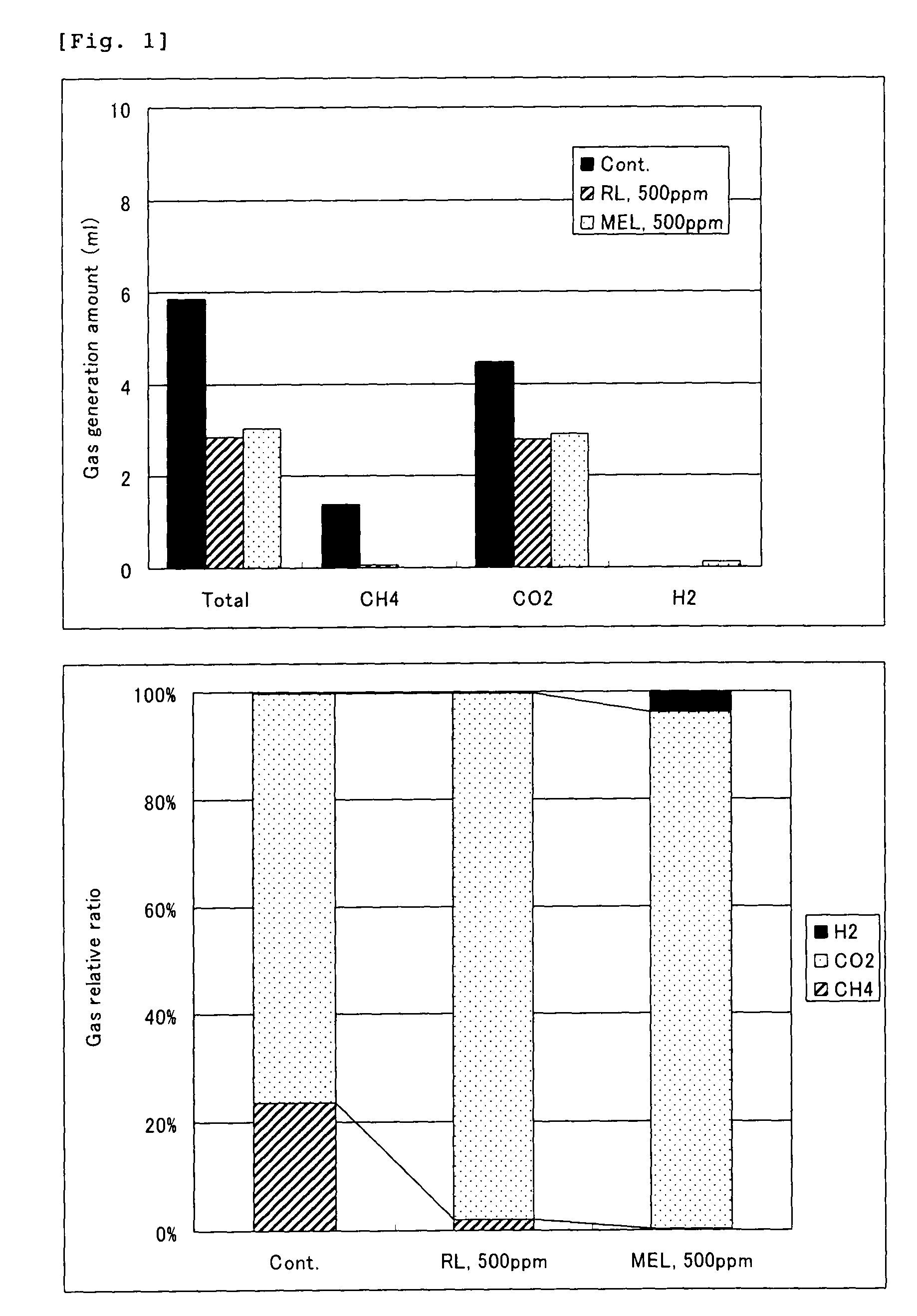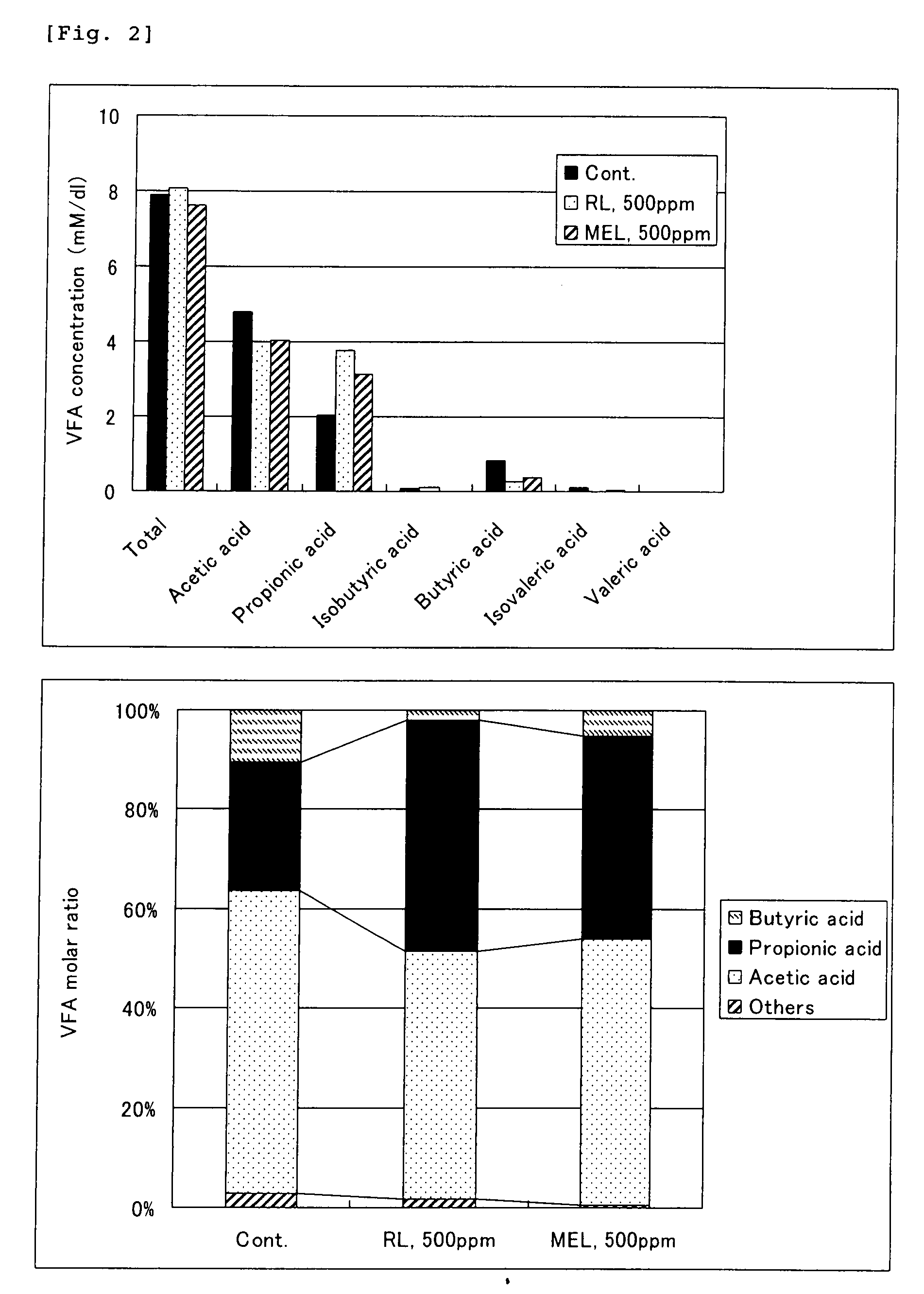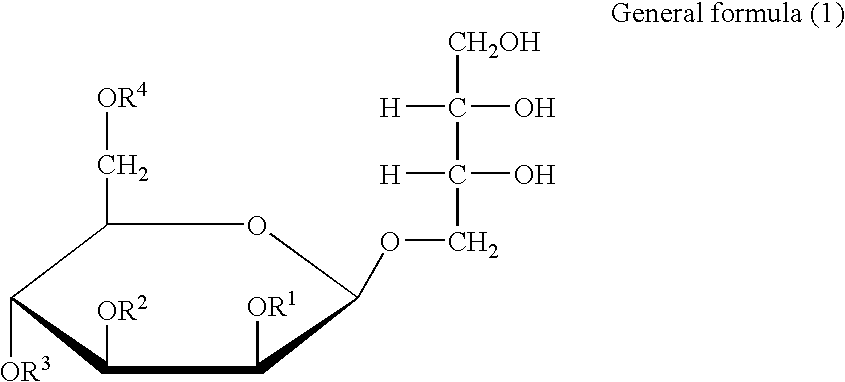Feed additive and feed
a technology of additives and feeds, applied in the field of feed additives and feeds, can solve the problems of reducing the commercial value of livestock, affecting the energy efficiency of feed, and affecting the appearance of antibiotic-resistant bacteria in the livestock industry, and achieve the effect of safe and easy means
- Summary
- Abstract
- Description
- Claims
- Application Information
AI Technical Summary
Benefits of technology
Problems solved by technology
Method used
Image
Examples
examples
[I] Evaluation of Antibiotic Activities
Production of MEL
(1) Culture of Pseudozyma Yeast
(Preculture)
[0062]10 ml of potato dextrose medium was added to a test tube, and a silicone plug was inserted therein. The tube was sterilized in an autoclave, and Pseudozyma aphidis NBRC 10182 was inoculated, followed by shaking culture at 30° C. for 24 hours.
(Main Culture)
[0063]50 ml of a medium containing ion-exchanged water, 8% soybean oil, 0.2% NaNO3, 0.02% KH2PO4, 0.02% MgSO4.7H2O, and 0.1% yeast extract were added to a 500-ml Erlenmeyer flask, and a silicone plug was inserted therein, followed by sterilization in an autoclave. The above-mentioned NBRC 10182 preculture solution was added thereto, and shaking culture was performed at 30° C. / 220 rpm for 7 days.
(2) Extraction / purification of MEL
(Extraction)
[0064]50 ml of the culture solution obtained in the main culture was dispensed into a separating funnel, and extraction was performed twice with an equal amount of ethyl acetate. The ethyl ac...
PUM
| Property | Measurement | Unit |
|---|---|---|
| pH | aaaaa | aaaaa |
| pH | aaaaa | aaaaa |
| pH | aaaaa | aaaaa |
Abstract
Description
Claims
Application Information
 Login to View More
Login to View More - R&D
- Intellectual Property
- Life Sciences
- Materials
- Tech Scout
- Unparalleled Data Quality
- Higher Quality Content
- 60% Fewer Hallucinations
Browse by: Latest US Patents, China's latest patents, Technical Efficacy Thesaurus, Application Domain, Technology Topic, Popular Technical Reports.
© 2025 PatSnap. All rights reserved.Legal|Privacy policy|Modern Slavery Act Transparency Statement|Sitemap|About US| Contact US: help@patsnap.com



